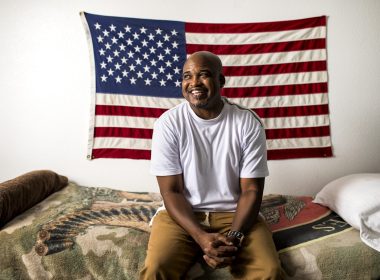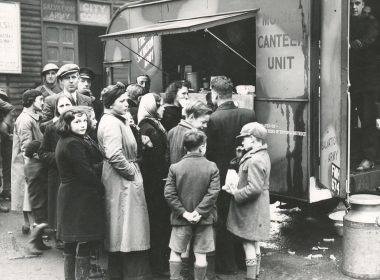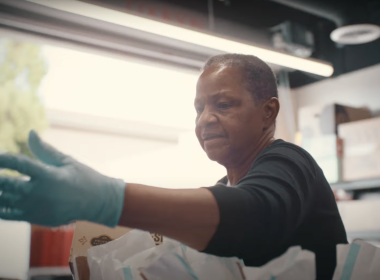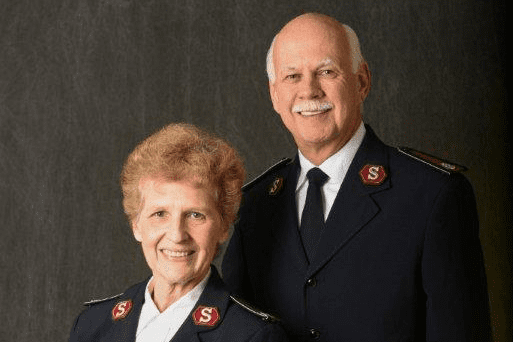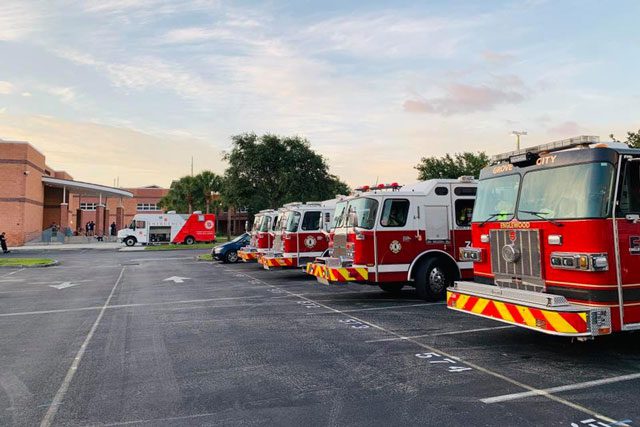(Ed. note: This article summarizes the discussion of conference members and was assembled by Lt. Martha Shepherd and Captain Gene Ragan.)
“It was the best of times. It was the worst of times.” This sentiment best expressed the attitude and spirit demonstrated by officers who gathered in San Pedro for the first “Round Table” meeting of the New Model Corps. The New Life/New Heights Centers seminar was held recently as a mid-day evaluation meeting, assessing the progress made in regard to MISSION2000 goals.
The best times come when you are able to experience unprecedented church growth – through friends bringing friends, Bible studies and small groups being formed on a regular basis, and new births in Christ on a continuing basis. The worst times come when you experience discouragement from watching someone walk away from Christ, from being in the middle of a “slump,” and often from the estrangement from peers because of “our perceived abandonment of tradition.”
Six New Model Corps were represented at the meeting, exemplifying the best of times for the New Model Corps aspect of MISSION2000 – Amador Valley Christian Fellowship, Lakewood NHC (New Heights Center), North Phoenix New Life Center, Colorado Springs NHC, So. Valley NHC, and Santee New Life Center (which will soon become a “Recovery” corps in the innovative model). These six centers have withstood numerous obstacles, still surviving in the midst of problems with leadership, finances and are the survivors of 14 New Model Corps plants. Fourteen? Where are the other eight? While they may not be counted as surviving, successful church plants, we can’t accurately classify them as failures–not as long as there are lessons which can be learned from them. That was an underlying purpose of the seminar: to restate what we have learned from actual experience in this new venture in church planting in order to better prepare ourselves for the “Second Wave.”
Questions asked
Questions that the planters asked themselves were: Have we followed the plans laid for us? Are we reaching people for Christ? Are we being successful in our efforts to reach the MISSION2000 goals? Have we remained true to the doctrines, principles and disciplines of The Salvation Army? Are we meeting the financial expectations required of us? Are we ready to reproduce ourselves, as stipulated in the founding instructions for New Model corps? Is there some way we can work to “unite the ranks”?
The findings were exciting and encouraging. All of the centers show definite growth–some quite dramatic, others steadily increasing. All but one of the church plants was a “pioneer” effort, where a corps officer and his family were sent to a targeted location armed with a prayer and a plan. Financial resources generally covered allowance, housing, a family car, a large mass mailing, and basic equipment. Church usually began in the officers’ living room, with family and friends, and as it grew it would move to a storefront–a hotel room–a school gymnasium. Plans originally called for a Celebration Sunday within six months, but few church plants were able to form a solid core group within that time frame. Most held their opening Celebration Sunday within a year.
The extra time seems to have paid off, though. All of them have solid foundations of memberships, which include soldiers and adherents. It should be noted that “adherents” in a New Model corps often have the added stipulations of financially supporting their church, being involved in a small group or ministry, and a daily devotional life. These added requirements have come from the church bodies themselves, since financial self-support is a key element. Membership, even as an “adherent,” is not taken lightly, and is a serious commitment to The Salvation Army. Discipleship of new Christians seems to be a priority in all the New Model corps, and can account for the large number of small groups which reproduce on a regular basis. Lakewood (Colo.) New Heights Center has 17 small groups offered in their weekly program, any one of which is open to visitors who may be needing the support that can be found in an intimate setting. Visitors are also a common occurrence at South Valley New Heights Center in Littleton, Colo., with sometimes as many as 10-15 people on a Sunday. Do they come back? Yes, they do, and quite often they bring friends and family with them.
What is it that’s bringing them back? What happens in a New Model corps anyway? How different are the Sunday services from a conventional corps? Not as different as you might expect–well, except for the music. But, let’s face it, the music differs from corps to corps regardless of whether it is conventional or New Model. It even differs within the New Model corps themselves. Phoenix NHC enjoys a morning of worship based on contemporary praise songs and choruses, Lakewood NHC swings to a reggae Caribbean style of singing, and South Valley NHC rocks outs to Jesus re-makes of Beatles tunes and even ZZTop (who?). But all attendees are greeted by uniformed officers (yes, they do wear the uniform, regardless of what you’ve heard) and welcomed to The Salvation Army. After the music, it’s typical Salvation Army fare–prayer, offering, Bible teaching, children’s message. It may not always be in the same format, but the teaching still centers on Biblical truths of salvation and holiness, the singing still offers praises to God for who he is and what he has done, the prayers still give thanks and recognition to the Lord. The doctrines are the same; the principles remain unchanged. But, yes, sometimes the music is a little louder. Okay, a lot louder.
Goals
What about the pre-determined goals of financial responsibility and reproduction? The New Model corps are very conscious of the financial accountability expected of them, since a substantial amount of money is given for a three-year period. It is encouraging to see the financial progress that every New Model corps has seen. Tithing in a New Model corps is on average above traditional giving. Presently, units represented receive an average of $56,000 per year. This is with three of the corps being less than two years old. The largest expense, by far, is the officer-related expenses. Publicity is also a necessary expense that contributes greatly to church growth (mailings, advertisements, etc.) but costs more than anticipated in the initial planning stages. It was recommended that budgets for future corps plants be prepared based on location and variable economic conditions, rather than a set budget for all church plants. Financial support plans for all corps plants (whether New Model or conventional) need to be realistic in order to be successful.
In the midst of the logistical discussions came future plans and goals. Even in this early stage of growth, several of the New Model corps have already begun discussing where their “daughter” plant will be, as specified in the original plans of MISSION2000. Church members are already praying about it; church leadership is already planning it. How can baby churches even plan to start new churches? By using the same principle that created them – new people bring new people who bring new people. When new believers enter the Christian family, they are entreated to leave the old life; join with the brothers and sisters. “After a few years, the only people they know are other Christians. That’s not how it should be. We want to take Christ into the world; we strive to teach our people how to be witnesses to the unsaved.” In Phoenix NLC, Lieutenants Craig and Kristi Bowler have found it helpful to be involved in several support groups outside the church in order to minister to the community. They have a flourishing youth ministry in a trailer park which gives them constant contact with the unsaved community. Maybe that will be their next church plant?!
The way to go?
Is it really true that church plants are the way to go? Doesn’t it seem wiser to utilize the existing resources of an established body of believers and just try to build? While that method certainly should not be ignored, there will still be a body of unbelievers who will not be reached because they will not relate to the established church. It is that unreached community that The Salvation Army continues to reach for in an effort to fulfill its mission statement “without discrimination.” The Salvation Army has never been one to stop at cultural boundaries–look at how many countries have been reached, look at how the cross-cultural ministries are growing in numbers. And is that not really what a New Model corps is? Could it not be termed a cross-cultural ministry and still be appropriately named?
In an effort to produce an identity statement which would show its unity with The Salvation Army and yet depict its uniqueness within the body, the officers of the New Model corps discussed various aspects of the New Model corps that are similar to each other yet differentiate it from the conventional corps.
It was accepted that successful church plants tended to be personality-driven, with strong officer leadership. The Salvation Army is seeing a trend in longer appointments for corps officers and this will undoubtedly help contribute to church growth in both New Model and conventional corps.
Programs abound, but they may differ in makeup from the traditional Salvation Army programs. For example, Women’s Ministry programs are many and varied. They have a beginning and an end, depending upon the needs of the congregation and the community at the time, whereas Home League is an ongoing membership program. Most congregation members of New Model corps are committed to relationships, not programs. They will attend meetings as long as they are contributing to a cause or fulfilling a specific need in their lives. Traditional programs may or may not be present, but they don’t begin until the need is pressing and the leadership in place. League of Mercy is active in all New Model corps–and often includes prison ministry and juvenile detention centers.
Social services
Observers have often commented that a lack of social services created a difference from conventional corps. It is quickly seen that New Model corps do a great deal of social services based on the giving of the congregations. Many conventional corps are in a larger-city setting, where social service is handled by a Family Services office and therefore are quite similar to New Model corps in offering incidental social services–referrals, small vouchers, counseling, etc. New Model corps tend to offer much more than other community churches because of their natural association with The Salvation Army and its gift of ministry to the needy. Social services have been adopted by the church members as their way of helping the less fortunate. Few community volunteers are needed because the church members shoulder (or should it be said “soldier”) the responsibility.
Another difference in the New Model corps is the congregation’s makeup. Church attendees (members or visitors) seem to consist primarily of unchurched baby boomers or baby busters. They require something different from the groups of builders or boomers who have grown up in Christian families, singing the expressive hymns and participating in the rich traditions of the church. They need something else–something a little outrageous, something that makes them stop and think, “Is this for real?” They are a culture into themselves–humanistic, cynical, and searching.
“Our methods must of necessity be always changing with the every varying character and circumstances of the people whom we seek to benefit. But our principles remain as unchangeable as the throne of Jehovah.”
(Quote from George Scott Railton in 1912)
In accordance with the philosophy of Army forefathers, the New Model corps officers see themselves as an integral part of The Salvation Army with the same mission and united purpose. “As New Model corps we translate the Christ-centered ministry and rich heritage of The Salvation Army to new generations; thereby reaching many unchurched people with the message of God’s mercy, Christ’s love, and the power of the Holy Spirit. In doing so, we will help to fulfill the mission the The Salvation Army.”
The seminar culminated in a serious covenant time, during which each officer renewed his commitment to The Salvation Army. “As officers of The Salvation Army appointed to New Model corps, we reaffirm that we will…love and serve God supremely, live to win souls, maintain the doctrines, principles and disciplines of The Salvation Army, and prove ourselves worthy officers. Therefore, we are committed, with the cooperation of divisional and territorial headquarters, to making this ministry work within The Salvation Army by: wearing the uniform, encouraging our congregations to take part in the multi-faceted ministry of The Salvation Army, and by so doing we will be fulfilling the goals of MISSION2000.”


